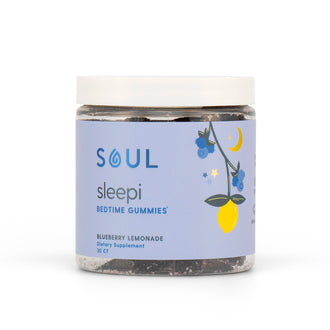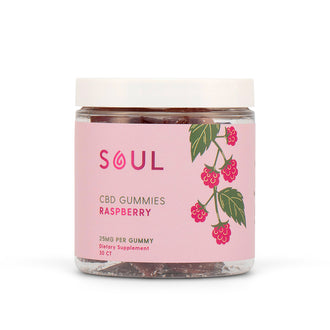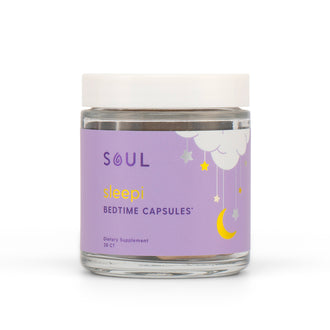
CBD has become a popular option to help the minds and bodies of millions of Americans move to a place of greater homeostasis and find relief. But, if you’re among the 14% of folks who’ve tried CBD products, you may now be wondering if CBD can go bad? The short answer is no … well, not really. It’s a little complicated!
With the rise in popularity of CBD, it becomes more essential to find out the complete answer to this question and also how to best store your CBD oil and other products for optimum freshness. After all, you chose to invest in yourself by purchasing CBD products in the first place. This way, you’ll get all the benefits CBD oil offers and won’t let anything go to waste.
We’re going to give you a complete education of what CBD is, tell how CBD oil is made and answer that pressing question about whether it goes bad or not. Then, we’ll make sure you’re well versed on how to properly store your cbd products.
What Is CBD?
CBD, or cannabidiol if you’re not on nickname terms, is a cannabinoid. The hemp plant is the premier natural source of these therapeutic compounds. But, believe it or not, your body also produces similar ones. Unfortunately, this gets a little complicated because of the language people use to refer to the ones produced by hemp and the ones your body makes.

Cannabinoids come in two types: endocannabinoids (produced by our bodies) and phytocannabinoids (found in plants). But the ones from plants are usually just called cannabinoids, so we’ll be sticking to that since we’re not in a science classroom. Cannabinoids can interact with your body’s endocannabinoid system (ECS). The endocannabinoid system may play a role in regulating many of the body’s basic physiological functions, including:
-
Mood
-
Appetite
-
Energy levels
-
Pain sensation
-
Memory and cognitive processes
-
Immune function
As one can see from this list, these systems can impact a person’s health in some significant ways! This is why it is no surprise that CBD oil has become a popular addition to many routines of folks who want to improve their quality of life.
How Is CBD Oil Made?
Knowing how something is made will help you see why it may or may not spoil or go bad. CBD oil is made from hemp plants. This plant is grown all over the world. It is generally planted in May, in the USA, so the crop will be ready for harvesting around October. Hemp has been cultivated and used by humans for over 12,000 years. A variety of Cannabis sativa contains little to no THC (tetrahydrocannabinol), which is the psychoactive ingredient in marijuana that gives you that “high” feeling.
According to federal law, industrial hemp grown in the USA can only have a THC content of 0.3% or less. Anything more is a violation of the government’s standards. Believe it or not, hemp is a crop that has been grown on American soil for centuries. Hemp used to be an important cash crop for many farmers in the U.S. because it could easily be grown on most farms, required few labor skills and helped produce valuable goods. It was displaced by cotton for a long time but experienced a resurgence in the 20th century.
Now, in the 21st century, thanks to the 2018 Farm Bill, industrial hemp has been deemed legal to grow and harvest in all 50 states. On a typical hemp farm, hemp plants can grow anywhere from six to 12 feet tall. Regardless of the growing conditions or location, each plant has an average of 10-20 pounds weight. The oil, which is the most valuable part of the plant with its many benefits, is separated from the flower through several processes.
The harvesting and extraction process for CBD oil can be done in a few different ways. The way hemp is harvested will depend on where it’s sourced and what it’s used for. The plants are either harvested manually or by machine before being dried out. After they have been dried, plant material is sent through a series of rollers that crush it and separate its fibers from the other parts of the plant. After this process, several methods can be used to extract CBD oil depending on how much THC the manufacturer wants in its final product — if any. For example:

Supercritical CO2 Extraction Method – CBD oil produced with this process has no psychoactive effect, as it doesn’t contain any THC. Still, it is expensive and challenging to do. First, carbon dioxide is pressurized in a special vessel at an extremely low temperature (31-32°F) until it becomes supercritical, enabling the fluid to act like a gas and like a liquid simultaneously, allowing for easy plant part separation.
Enhanced Ethanol Extract Method – This involves soaking the ground-up hemp in an ethanol bath for several hours. The resulting mixture is then heated to reduce it and create a concentrated, molasses-like substance that is pure full-spectrum CBD extract. This results in high levels of cannabinoids, including large amounts of pure CBD. Still, this type of extraction can also leave behind trace amounts of THC, other cannabinoids like CBN and terpenes.
Pure cannabidiol oil is known as CBD isolate. This contains nothing else and is what our organically farmed, gluten-free and USA-grown CBD solutions at Soul CBD are made with. Full spectrum CBD oil will contain THC, other cannabinoids and terpenes, while broad spectrum will be similar but THC-free. You can always verify the contents of your CBD products by looking at certificates of analysis (COAs) issued by independent third-party laboratories. These facilities check each batch of CBD oil produced to monitor cannabinoid content and ensure there’s nothing harmful in it like pesticides or heavy metals.
The CBD oil produced by the processes we mentioned, on its own, is incredibly concentrated beyond a point that is usable by the average person. That’s why we need to mix it to deliver proper serving sizes. This is done using carrier oils. Two popular ones are hemp oil and MCT oil. Since we use MCT oil, here at Soul, let’s take a closer look at it. Doing so will bring us closer to answering our questions about if CBD oil can go bad.
MCT Oil as a Carrier Oil
When it comes to asking if CBD oil will go bad, we need to take a look at everything that’s in the bottle. We’ve already taken some time to explain why we combine CBD oil and MCT oil elsewhere. But since MCT oil is a big part of what’s in the bottle you’re buying, it’s worth learning more about it. MCT oil is made up of a combination of medium-chain triglycerides. So that’s where we get the M-C-T from!
MCTs are a type of dietary fat that may improve cognitive performance and increase weight loss when combined with other healthy-living measures. Studies show that because MCTs have fewer carbohydrates and more calories per gram than other fats, they may prove helpful in reducing excess sugar consumption to regulate blood sugar levels. In addition, the unique structure of MCTs also gives them a higher level of energy density than longer chain triglycerides (LCTs), which means eating foods rich in MCTs helps individuals feel satisfied at the end of their meals without overeating. Coconut oil has the largest amount of natural MCTs in the world. Most commercial coconut oils contain over 60% of MCTs, but some have less than 10%.

MCTs can be absorbed by the body easily and quickly for energy production. It’s this quick absorption that makes it an excellent carrier oil for CBD. Most MCT oils have a shelf life of around two years. This is because MCTs are less sensitive to oxidation. This means they won’t go bad or rancid as quickly as other types of oils like cold-pressed olive oils. Those only stay fresh for 2-3 months if they are stored in a cool dark place with little exposure to air or light.
So, Does CBD Oil Go Bad?
The short answer is no, not really. Your CBD oil, when properly stored, should be fine for anywhere from one to two years. And most products will come with a best before date, so just try to stick to those guidelines, and you should be fine. However, as we’ve already mentioned, all the ingredients in your CBD drops matter when it comes to estimating how long it will be good. We know MCT oil has a long shelf-life. But what about its other ingredients?
It’s true that the unflavored varieties of CBD oil often last longer than the flavored ones because there are fewer ingredients to react with and degrade the compound. However, most companies take care to select flavoring ingredients carefully to not impact the longevity of the product.
What tends to happen over time is that your CBD products become less potent and eventually lose their effectiveness. The more they’re exposed to air and light, the faster this expiration date will come about.

So, the real danger isn’t if the CBD oil has gone rancid, but if it will still produce the benefits you bought it for. If you’re still unsure about your CBD oil, some signs that your CBD oil has gone off include:
-
Has changed consistency and thickened
-
Has developed a bad smell
-
Shows solid particles at the bottom of the container
-
Has a layer of residue on the top of the oil
-
Has started to change color and brown
-
Has an off-taste
If any of these issues are occurring within the first month or two of purchasing the product, and you’ve been storing it properly, we recommend contacting the company you bought it from. They should be able to help you out.
Storing Your CBD Oil for Optimal Shelf Life
The most significant factor to consider when it comes to how long your CBD oil will last is how you store it. Most CBD oil that goes off is due to user error, unfortunately. If your product isn’t stored correctly, then its shelf life will be reduced significantly — and, as a result, so will all of its beneficial properties. To ensure that you’re getting a product with maximum longevity, you need to store it in a dark location (like a cupboard or pantry) where temperatures remain relatively stable. You should also keep the container tightly sealed and avoid exposing it to too much light or heat.
Additionally, make sure that the bottle containing your CBD oil is opaque or at least amber (so UV rays can’t get through). It helps if it has a securely attached label to block light. This is also where you find the necessary information about serving size and CBD concentration in the bottle. To prolong its shelf life, consider storing your CBD oil in an airtight container or preserving jar. The same can be done for CBD capsules and CBD gummies, which can also go bad if exposed to too much light and humidity over time.If you follow these simple steps, your CBD oil will be good until its best before date and possibly long after!

Use It or Lose It!
As you now know, CBD oil doesn’t go rancid like other oils you may have in your kitchen; it actually has an incredibly long shelf life when stored properly. Still, the best way to make sure CBD oil doesn’t go bad is to use it consistently!
There are so many ways to incorporate CBD into your daily life, from using it every evening in the usual way (a dropper under the tongue 30 minutes before bed) to integrating it into some delicious CBD recipes. If you’re looking for more information about the different types of CBD available, the many reasons to use CBD, or getting in-depth about CBD serving sizes, we’ve got you covered.

Head over to Soul CBD’s education zone and learn everything you need to know! We hope these answers will help guide any future decisions you make when stocking up on your favorite CBD products.




